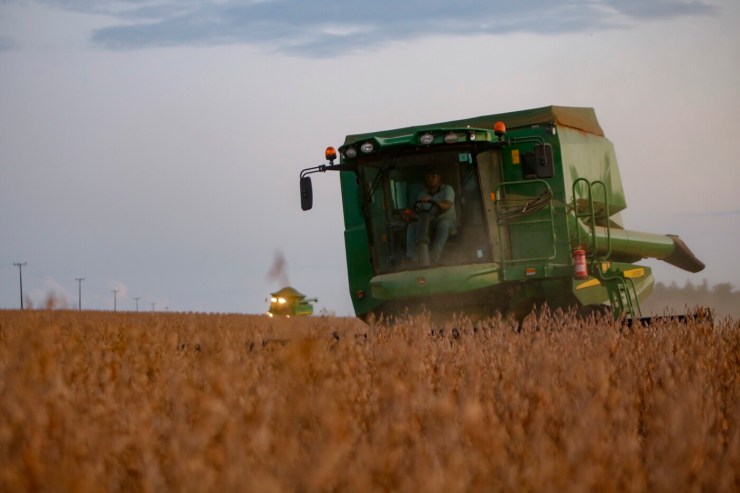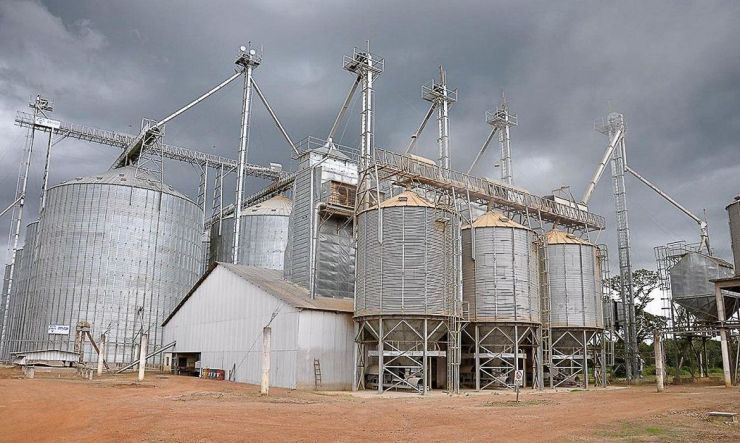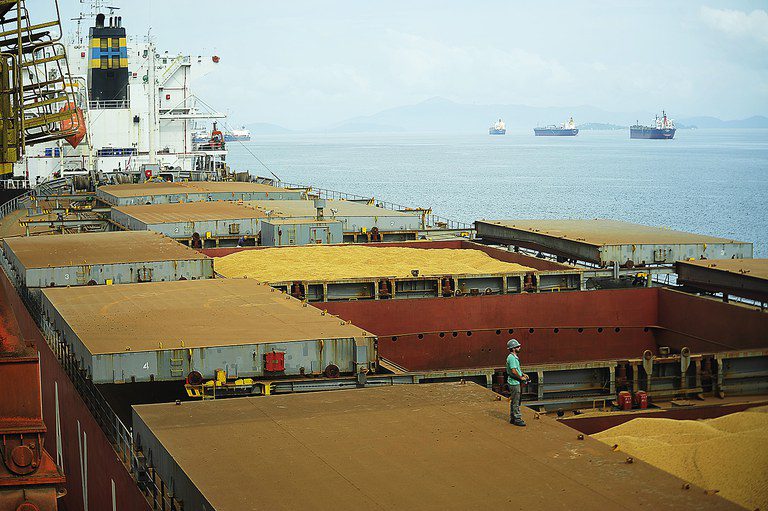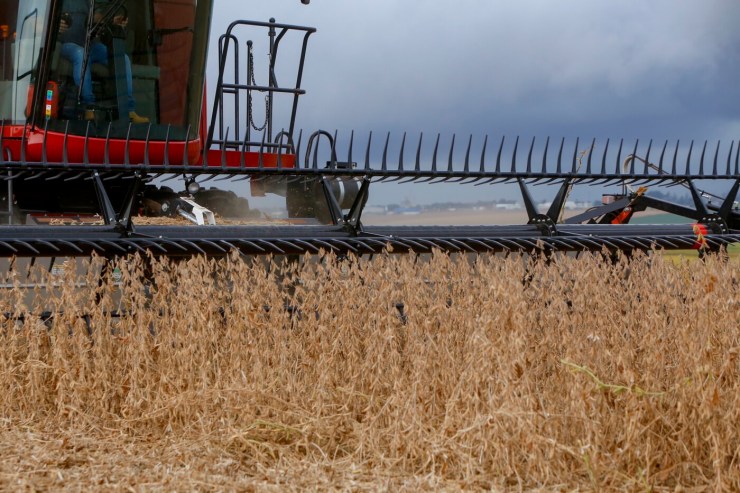Brazil is on track to close the 2024/25 corn harvest as the second-largest in history, with an estimated production of 130 million tons, according to Itaú BBA's Agro Consulting. This strong performance is mainly driven by the second harvest, which developed under favorable weather conditions and is expected to account for up to 110 million tons of the total.
For the 2025/26 season, the United States Department of Agriculture (USDA) projects a Brazilian harvest of 131 million tons, representing a 1.3% increase in planted area compared to the previous cycle. The Itaú BBA team estimates a 1.5% increase in total area, reaching 22.6 million hectares. "We're considering a slight adjustment in productivity, as the weather during the current harvest was quite favorable and may not be repeated in the next cycle," notes the consultancy's analyst, Francisco Carlos Queiroz.

Analyst at Itaú BBA's Agro Consulting, Francisco Carlos Queiroz: "There is a large volume of fertilizer still to be purchased, which brings uncertainty for the second half of the year, especially in regions where corn prices have fallen more sharply" - Photo: Disclosure/Itaú BBA
On the other hand, recent geopolitical events, in addition to supply and demand issues, have resulted in a significant increase in fertilizer prices, creating uncertainty about planning for the new harvest. The conflict between Israel and Iran has put pressure on the prices of nitrogen, a key input for corn. In the last 12 months, urea has risen 8%, MAP 12%, and KCl 17%.
Most of the demand for the first harvest has already been met, but for the second 2025/26 harvest, only 30% of the necessary fertilizers have been purchased so far. "The rise in input prices, combined with the recent drop in domestic prices, has worsened the exchange rate and may limit the expansion of planted area next year," the analyst notes.
Since March, prices have fallen 23% in Campinas, São Paulo, and 37% in Sorriso, Mato Grosso, two important trading hubs. As a result, Brazilian corn has become competitive again in the export market, at parity with Chicago prices.
The second crop harvest, however, is behind schedule. Above-average rainfall and lower temperatures have hampered progress, but the harvest picked up again in July. "So far, the export pace is below that recorded in the same period last year, but shipments are expected to increase starting in August, driven by increased supply and lower prices," Queiroz assesses.
Second-crop sales are hovering around 35%, similar to the average for the last five years. Considering the estimated 105 million tons, there are still approximately 70 million tons to be traded in the domestic and international markets.
Globally, demand is expected to continue to pressure supply. The USDA projects global consumption of 1.267 billion tons for 2025/26, an increase of 2% over the previous cycle, driven by use in feed and ethanol. As a result, global ending stocks are expected to fall to 275 million tons, the lowest level since 2013/14, and the stock-to-use ratio is expected to decline from 23% to 22%. "Despite the tighter global situation, the increase in North American stocks should mitigate the upward pressure on international grain prices," says Queiroz.
Rising fertilizer prices put pressure on costs
Despite production growth projections for the 2025/26 harvest, Brazilian corn producers are expected to face tighter margins. Itaú BBA's Agro Consulting expects margins to tighten, following the recovery seen in the 2024/25 crop year.
According to Queiroz, the main pressure will be rising fertilizer costs, which are driving up operating costs. "Estimates indicate that fertilizer costs are expected to rise by approximately 25% in the next harvest, directly impacting an 8.5% increase in total production costs," he points out, emphasizing: "This trend could have an even greater impact if further logistical impacts arise from geopolitical tensions in the Middle East."

Photo: Shutterstock
Urea, a key nitrogen input for corn, saw a significant increase in June, driven by the escalating conflict between Israel and Iran. "While the ceasefire announcement may bring some temporary relief, the market is already operating with a new price level. Expectations are for a normalization of Iranian supply and production in Egypt, which depends on Israeli natural gas supplies, but the environment remains highly volatile," Queiroz analyzes.
In addition to urea, MAP and KCl also appreciated, driven by a combination of limited supply and strong demand, especially from Brazil and India. As a result, the exchange rate between corn and fertilizers, which indicates how many bags of corn are needed to purchase one ton of the input, reached five-year highs for MAP and urea at this time of year. In the case of KCl, despite the decline, the indicator is still below the historical average.
Low fertilizer acquisition
With rising costs and falling corn prices, fertilizer sales remain slow. According to Agrinvest, only 25% of the fertilizer demand for the 2026 second crop has been purchased so far, below the average of 29% recorded for the same period in previous years. "There is a large volume of fertilizer still to be purchased, which creates uncertainty for the second half of the year, especially in regions where corn prices have declined more sharply," explains Queiroz.
Tight margins
The impact of the drop in prices is already noticeable. Between May and June alone, corn prices in Sorriso, Mato Grosso, recouped all the gains accumulated over the previous seven months. "This movement serves as an important warning to producers who didn't hedge and lock in their prices in advance. The consolidation of the strong productivity scenario significantly reduced the revenue potential for those who didn't protect themselves from market volatility," the analyst notes.
Use of corn for ethanol intensifies dispute over grain
The growing use of corn in ethanol production has increased domestic consumption of the grain. According to the National Corn Ethanol Union (Unem), Brazil currently has 25 operating plants that use corn as a raw material, concentrated primarily in the Central-West region.

Photo: Freepik
In the 2024/25 harvest, an estimated 21.3 million tons of corn will be used for ethanol production. For the 2025/26 harvest, this volume is expected to grow to approximately 23.7 million tons, representing more than 25% of the country's total corn consumption. "The expansion of domestic corn production and the environmental appeal of biofuels are factors that continue to drive new investments in the sector," says Queiroz.
As corn ethanol production grows, so does the supply of its byproduct, DDG (distillers' dried grains), widely used in feed formulation. "This ingredient has been gaining ground, particularly in beef and dairy cattle nutrition, due to its competitive cost in regions near mills," says the analyst, emphasizing that the increased availability of DDG has also boosted exports of the product, with Vietnam, Turkey, and New Zealand among the main destinations. "Brazil recently gained access to the Chinese market, but there have been no shipments to China yet," he reports.
Growing domestic demand for corn, driven by ethanol plants, intensifies competition for the grain and increases the domestic market's sensitivity to external factors. "Any crop problems in major corn-producing countries can directly influence prices in Brazil, due to the correlation between markets," Queiroz emphasizes.
Access to the digital version of Bovinos, Grãos & Máquinas is free. To read the full version online, click here. Happy reading!





